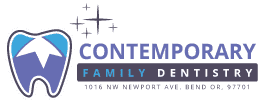Your hygienist is an integral part of your oral health care team. They are responsible for providing preventive care to help you maintain a healthy mouth. They provide various services, including cleaning and examining your teeth and gums, removing plaque and tartar buildup, and providing education on proper oral hygiene.
Your hygienist will use special tools to clean your teeth, including a scaler to remove plaque and tartar buildup. They may also use an ultrasonic scaler to remove plaque and tartar from hard-to-reach areas. They may also use a polisher to smooth the surfaces of their teeth and remove any remaining plaque. Your hygienist will also examine your teeth and gums for signs of decay, gum disease, or other oral health issues.
They may take x-rays to get a better look at your teeth and gums. They may also apply sealants to protect your teeth from decay. Your hygienist may also provide fluoride treatments to help strengthen your teeth and prevent cavities. They may administer local anaesthetics to help reduce pain and discomfort during specific procedures. They may also perform other preventive treatments, such as scaling and root planing, to help maintain oral health.
What is the difference between a dentist and a dental hygienist?
A dental hygienist is specially educated to care exclusively for oral health. They have extensive training to comprehend how and why your teeth and gums might become unhealthy, recognise the early warning symptoms of gum disease, and assist you in changing practices that could accelerate gum disease formation and can treat any gum disease.
On the other hand, your dentist will treat any decay, assist in restoring damaged teeth, replace missing teeth, straighten crooked teeth, and have a deeper understanding of the anatomy surrounding your head, face, and neck, allowing them to spot the early warning signs of oral cancer as well as bite problems that can cause headaches and neck pain.
As a result, seeing a hygienist ensures you see someone specially trained to assist you with your dental health and keeps costs down as the dentist needs to do it themselves. Your dentist will need help performing the hygienist role during an allotted appointment time; doubling the appointment time to give the dentist time would increase your cost.
Every six months, it is common to see both the dentist and the hygienist in quick succession. A standard dental health checkup with your dentist typically lasts 30 minutes, and a typical dental hygiene session generally is 30 minutes long. To assist in spreading the expense of these sessions over a more extended period during the year, several offices offer dental membership programmes.
A scale and polish are what?
After the calculus removal, the teeth will be polished, cleaned, and flossed. This is the famous phrase for cleaning your teeth of calculus (scale) and then polishing them to make it more challenging for the calculus to reattach. However, a scale and Polish need to be more concise in what is done. Every tooth and its surrounding gum tissue will be examined by your hygienist, who will also consider your eating and cleaning habits to determine why calculus has accumulated in certain regions. You will then advise on how to prevent this in the future.
How often should one see a dentist and a hygienist?
If it has been a while since your last visit to the dentist or hygienist, you may need to schedule more regular visits to restore the health of your teeth and gums. For three to four months, a monthly visit to the hygienist may be necessary to accomplish this. Routine visits to the dentist and hygienist every six months are advised after your dental health is in an appropriate state.
What equipment do dental hygienists and dentists use to brush their teeth?
Most dentists invest significantly in technology and equipment to ensure you get the best care possible. An ultrasonic scaler is a brilliant piece of technology that many dentists employ. This uses ultrasonic waves sent to the dental calculus at the probe’s tip attached to an ultrasound machine. The high-frequency ultrasound quickly, painlessly, and comfortably removes the calculus from your teeth. Your hygienist can clean your teeth more rapidly with this tool than with hand-held equipment alone.
Your hygienist will use a variety of hand instruments in addition to the ultrasonic machine to clean the tight spaces between your teeth. When using a toothbrush, reaching the rear of your mouth might be challenging between the final teeth, where calculus can quickly build up. Cleaning in these places and eliminating the calculus may be difficult, particularly if the teeth are severely misaligned.
Final note
Your hygienist is an integral part of your oral health care team. Your hygienist will also provide education on proper oral hygiene. They may discuss the importance of brushing and flossing regularly and the benefits of mouthwash. They may also offer tips on choosing the right toothbrush and toothpaste.
By visiting your hygienist regularly, you can help ensure that your teeth and gums stay healthy. They provide a variety of services to help you maintain a healthy mouth. They may also take x-rays, apply sealants, and perform other preventive treatments.



